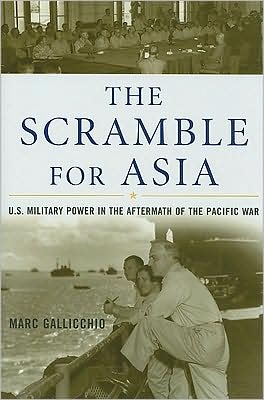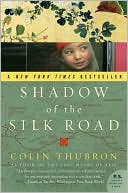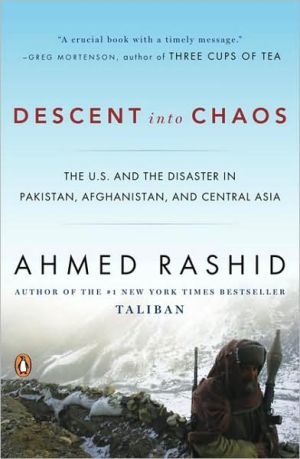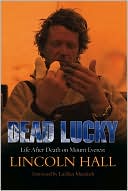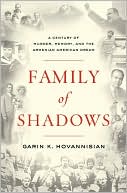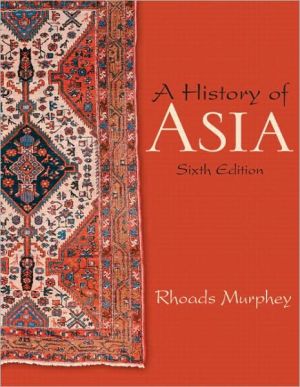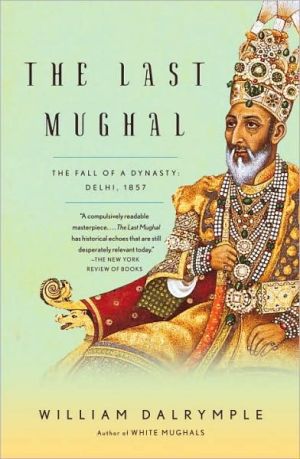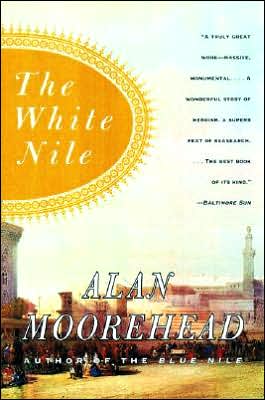The Scramble for Asia: U.S. Military Power in the Aftermath of the Pacific War
As American generals and diplomats accepted Japan's surrender on the deck of the U.S.S. Missouri in September 1945, allied combatants wrestled for power in the new post-war world. The decisions made to effect Japan's surrender entangled U.S. forces on the mainland of Asia for the next two years, and helped shape the next several decades of international relations in the Far East.\ Marc Gallicchio expertly examines the diplomatic, military, and economic struggles in which the United States,...
Search in google:
Victory over Japan Day was August 15th, 1945. Yet that day was not the end of hostilities and open gun fire across Asia. As American generals and diplomats moved toward the official surrender on the deck of the U.S.S. Missouri at the beginning of September, the allied combatants wrestled for power in the new post-war world. Gallicchio expertly examines the diplomatic, military, and economic struggles in which the United States, China, and the Soviet Union were embroiled. Victory over Japan was but a prelude to an American search for a lasting peace across Asia, stretching from Korea to Vietnam and out to the Pacific atolls.
Preface Chapter 1: Intermission Chapter 2: The Politics of Surrender Chapter 3: The High Water Mark Chapter 4: Domestic Politics and Foreign Policy Chapter 5: Occupational Hazards Chapter 6: A Lingering Presence Conclusion: No Peace for Asia Selected Bibliography
\ American Historical ReviewClearly written and concise study. . . . Gallicchio covers the dramatic shift in President Harry S. Truman's initial intention to seek cooperation with the Soviet Union to secure Japan's surrender and the impact of such sentiments. Gallicchio's book derives its arguments from a diverse assortment of primary and secondary sources. This extensive research is summarized in an individual bibliographic essay for every chapter. . . . Gallicchio also makes excellent use of quotations and insightful anecdotes. He relies on firsthand recollections of American soldiers.\ \ \ \ \ Pacific AffairsIntended for undergraduates and general audiences, this brief but detailed overview can benefit scholars in the field as well. The Scramble for Asia relies on both recent scholarship and the author's prior work with contemporary soldiers' and journalists' materials to offer a new, synthetic interpretation of American policy making in the immediate postwar period in Asia that is at once comprehensive and persuasive.\ \ \ ChoiceThis latest volume in the 'Total War: New Perspectives on World War II' series is a fascinating account of the days following Japan's sudden surrender in 1945. . . . This belongs in all serious WW II or Cold War collections. Highly recommended.\ \ \ \ \ Journal of American StudiesAdds unexpected and welcome flavour to what would otherwise be a rather conventional study of the interaction between foreign policy and military planning. . . . What Gallicchio has managed to convey, above all, is the profound confusion that beset U.S. policy in the Far East in the two years following the Japanese surrender. Overbearing personalities clashed over priorities, the looming confrontation with the Soviet Union heightened tensions, and the domestic pressures for military retrenchment meant that the resources available to impose American will were never matched to the more grandiose schemes of those who wanted to translate the recent victory over Japan into a dominant position on the East Asian mainland.\ \ \ \ \ CHOICEThis latest volume in the 'Total War: New Perspectives on World War II' series is a fascinating account of the days following Japan's sudden surrender in 1945. . . . This belongs in all serious WW II or Cold War collections. Highly recommended.\ \ \ \ \ Journal Of American StudiesAdds unexpected and welcome flavour to what would otherwise be a rather conventional study of the interaction between foreign policy and military planning. . . . What Gallicchio has managed to convey, above all, is the profound confusion that beset U.S. policy in the Far East in the two years following the Japanese surrender. Overbearing personalities clashed over priorities, the looming confrontation with the Soviet Union heightened tensions, and the domestic pressures for military retrenchment meant that the resources available to impose American will were never matched to the more grandiose schemes of those who wanted to translate the recent victory over Japan into a dominant position on the East Asian mainland.\ \
